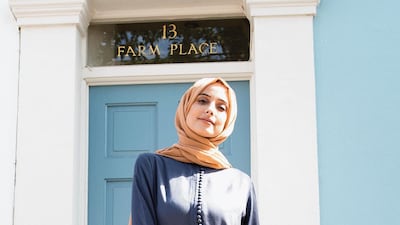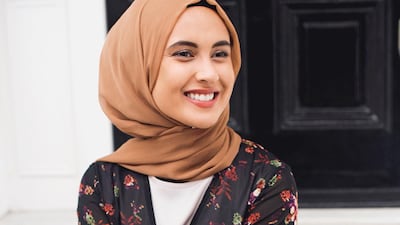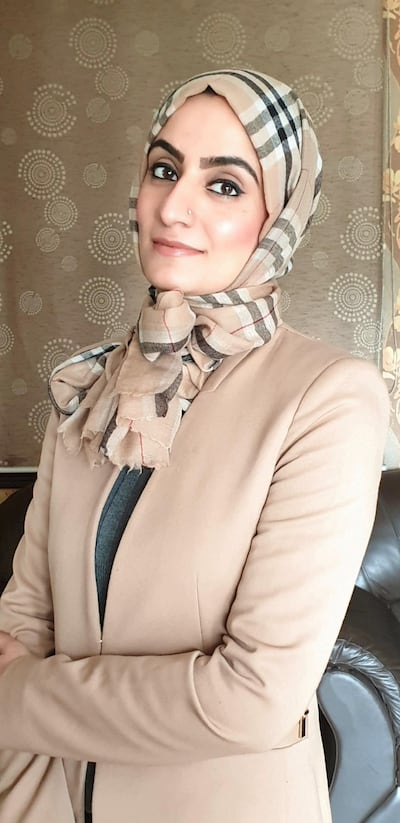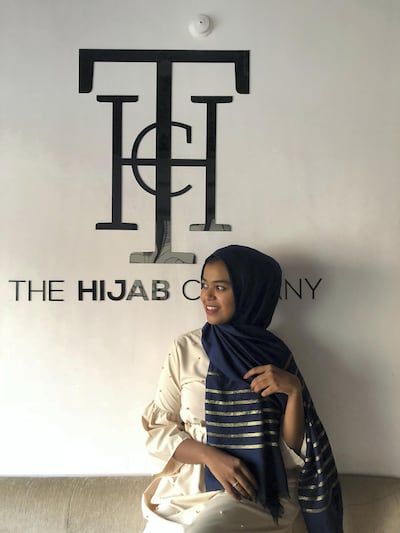When Nighat Ahmad launched her modest fashion brand, The Hijab Lee, in the northern Indian city of Kanpur in 2014, she was not prepared for the disapproval it would generate. “I was constantly asked how I could mix hijab and fashion,” she says.
It was difficult for her to explain why her brand sold jumpsuits and maxis, and why she was often seen in a long skirt and a hijab. “Some people said, if you are a hijabi, wear a burqa with it, or give up your hijab,” says Ahmad, 37, who named her brand based on the initials of her three daughters Tuba, Hiba and Liba.
Entrepreneur Shanaz Rukshana was in school in Chennai when she started wearing a hijab, but was unable to wrap her head around its need and role. She decided to study international Islamic studies. “I wanted to know what it is to be a Muslim and did not want to be blind about my faith,” says Rukshana, 26.
The course helped her in understanding her religion and got her interested in modest dressing. “I realised that in India there are misconceptions among Muslim women about dressing, one of them being that black, grey and cream should be the preferred colours for outfits,” she says. “On the contrary, I found that there is no restriction on colour and style in Islam, and there is so much to experiment and play around with,” she says.
Rukshana launched her modest fashion label, The Hijab Company, in 2017 with a bricks-and-mortar outlet in her native Chennai and an online portal that ships worldwide.
Breaking stereotypes in style
Both Ahmad and Rukshana stepped into the business to break stereotypes about modest dressing in India. When The Hijab Lee launched, home-grown modest clothing brands had only begun to emerge in the country. Today, a slew of fashion labels, bloggers and influencers are thriving, not only across large metros, but also in smaller cities such as Kochi, Kozhikode and Kanpur.
Last year, Lakme Fashion Week became the first big fashion event in India to include modest fashion, by featuring a collection focusing on hijabs for working women.
According to Salaam Gateway, an information platform tracking the global Islamic economy, the Muslim population in India – the third largest in the world – spent an estimated $11 billion (Dh40.41bn) on clothing in 2015. With an expected annual growth of 13 per cent, this figure was set to reach $20bn this year. One of the biggest trends the platform identified is the emergence of e-commerce. Almost every brand has an online arm, and then there are those such as Little Black Hijab, Zak Attire and Hazel Hijabs that sell exclusively on Instagram, which has 88 million Indian users as of April 2020, according to research company Statista.
However, many customers still prefer the complete shopping experience and the option of trying various products before picking one, which is why many brands have retail stores and are looking to expand across cities – Ahmad's being one of them. This year, The Hijab Lee was renamed House of THL, but its selling point continues to be traditional hand embroidery used liberally across maxis, pantsuits and abayas. The label is also popular in the UAE, and stocked by 1422 – the Arab Fashion Council's first "ready couture" store – and by e-retailor Ounass.
“Muslim women, especially the young educated ones, look for individuality when it comes to dressing,” Ahmad says. “They want to step out, learn, work and dress for it, but not at the cost of their modesty.
Nabeeha Fakih, aka The Urban Hijabee, a modest-fashion influencer with 23,000 YouTube and more than 60,000 Instagram followers, feels that the emergence of modest fashion in India is significant for Muslim women across the country.
“Women feel empowered when they can be beautiful in their own skin without having to show it,” Fakih says. Seeing others follow this fashion movement can be reassuring, and boosts their confidence in embracing fashion and style without the need to disregard their cultural roots.
How Indian women are finding unity in diversity
In India, the diversity of culture dictates tastes in fashion. Unaisa Subair, a hijabi YouTuber from Kochi who runs Zak Attire, finds that north Indians prefer her hijab and make-up tutorials for a round face, while women from the south lap up the ones for V-shaped faces. “My audiences from the north also have a lot of questions about accessorising right,” says Subair, 22.
While women from both India and the Middle East follow Subair’s tutorials, Ahmad says that the hijab and abaya choices of Indians differ from those of this region, who like to experiment with the bold and elegant.
“Indians still prefer the classic black or grey abayas with a closed front, and are at the initial stage of accepting colours in the customary outer garment,” she says. Rukshana notes that viscose is a favoured fabric through the year for hijabs.
The price preferences of Indian customers, too, vary widely. “We had to reduce our margins drastically while maintaining our quality standards, to make a place in the market,” says Junayd Miah, co-founder of Islamic Design House, a British modest fashion brand that launched in London in 2008 and entered the Indian market with a shop in Kozhikode and Kochi about 18 months ago.
However, Ahmad finds that House of THL’s products sell-out even within the range of 5,000 to 40,000 rupees (up to Dh1,930). The Hijab Company’s Rukshana says consumers in metropolitan cities do not mind spending more but in a lot of smaller towns “the hijab becomes just an accessory women do not feel the need to spend a lot on”.
With more choice, there is less stigma
Either way, the emergence of these brands has given modestwear-seeking Indian women more choice than ever. Before, they had to rely on local tailors or home-run boutiques that “made modest fashion generic and bland”, says Ahmad.
One of the major drivers for modest fashion in India is social media, where influencers are a small but growing tribe. Fakih, a dentist who recently got married and moved from Mumbai to Glasgow, started her Instagram account in 2016 and her YouTube channel a year later.
“Unlike in Dubai, not many women in India are seen donning modest fashion on the streets, so there is very little chance of getting any inspiration from there,” she says. “Social media is a big influence in such a case.”
Fakih connects with her audience by offering hijab tutorials, make-up hacks, outfit styling ideas and general lifestyle tips. College-goers, young mothers and working women all try to take something from her social media pages, including some confidence, she says. “Having seen me share my personal journey with the hijab on YouTube, they relate to me beyond fashion.”
Subair, too, gets a lot of questions pertaining to style and colour, but she has also been trolled. “I have even been threatened not to record these videos, because some people think that Muslim women are not permitted to show their faces to the public,” she says. “I used to get upset earlier, but now I just block such people,” says Subair.
The stigma has definitely reduced over the years, says Ahmad. The same people who chided her for making fun of the hijab by pairing it with a skirt now compliment her style. “The common misconception that hijabi women have to sit at home and working women do not wear a hijab is changing.”










